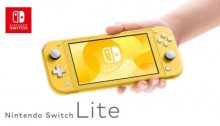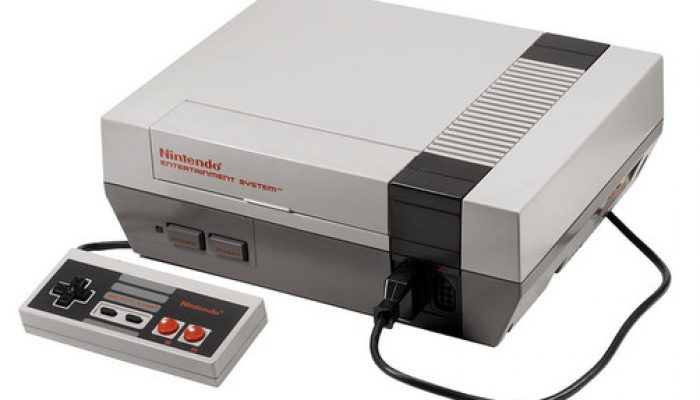 …Somebody at Nintendo needs to explain to me why they needed nine days to translate effectively four pages of text.
…Somebody at Nintendo needs to explain to me why they needed nine days to translate effectively four pages of text.
☆ NintendObs Event – Nintendo Q2 FY3/2020.
Question 1:
Looking at the sales units for Nintendo Switch Lite by region, the ratio of domestic sales to sales outside of Japan is 2:8. Considering that Nintendo Switch Lite is dedicated to handheld gameplay, my impression is that sales outside of Japan are even greater than expected, but how would you rate overseas sales in comparison to Nintendo’s expectations? Also, the presentation showed that the percentage of people purchasing Nintendo Switch Lite as their first system was not much different from those buying it as their second system. Were there any regional differences in this trend?
Answer 1:
Shuntaro Furukawa (President and Representative Director):
One of the features of Nintendo Switch is the three different play modes that let consumers freely change their playstyle to TV mode, tabletop mode, or handheld mode to enjoy games anytime, anywhere and with anyone. Nintendo Switch Lite, on the other hand, is a dedicated handheld version of Nintendo Switch that is compact and lightweight, making it easy to take on the go. With the launch of Nintendo Switch Lite that has such features, I think that consumers can now choose a system according to their lifestyle.
Regarding the question of whether the ratio of Nintendo Switch Lite sales outside of Japan is high compared to that for previous handheld systems, we just launched Nintendo Switch Lite on September 20, so my feeling is that the (regional) sales units are more a reflection of the existing Nintendo Switch momentum than of the trends in the markets for handheld systems or home consoles. For example, in an overseas market like the US that encompasses a large area, it is necessary to ship a certain number of units to build awareness for a newly launched product, and the ratios at this initial state also reflect that fact.
Regarding the initial status of Nintendo Switch Lite that we touched on during the presentation today, there are no major differences by region in the ratio of people buying Nintendo Switch Lite as their first system versus those buying it as their second.
Question 2:
I’d like to hear more about the Nintendo Switch Lite users who are first-time platform purchasers. I understand that you use their Nintendo Accounts to track software sales trends, and I was wondering if there are other differences in software purchasing trends, such as if they are purchasing previously released software at a different pace than Nintendo Switch users.
Answer 2:
Furukawa:
We launched Nintendo Switch Lite simultaneously with the release of The Legend of Zelda: Link’s Awakening. Since this is a game that was originally sold for handheld systems, many consumers bought it at the same time as Nintendo Switch Lite hardware. Other than that trend, the attach rate during the initial stage has been high for titles that are preferred by core gamers, such as The Legend of Zelda: Breath of the Wild. As the consumer base broadens, I think this might change.
Question 3:
Please talk about the impact of digital sales on profitability. The ratio of digital sales has grown this fiscal year as a result of actively promoting digital sales by bundling coupons with the Nintendo Switch hardware that can be used to download software, etc. as well as through sales of Nintendo Switch Game Vouchers. Looking at the financial results for the six months ended on September 30, I was impressed with the high gross profit ratio, but have there been any specific changes in the numbers, like in the download ratio of new software compared to previous fiscal years, for example? Entering the holiday season, do you think that this expanding contribution from the digital business will be reflected in profitability?
Answer 3:
Furukawa:
Digital sales have continued to grow even since entering the current fiscal year. One major factor is the increasing number of consumers who opt to purchase the downloadable versions of packaged software. In our view, this is less because of any specific measures on our part, and more because consumers themselves appreciate the convenience of purchasing download versions. We also think the fact that the titles released over the summer are popular among consumers who prefer to purchase download versions played a part.
These are not the only reasons that digital sales are growing, however. There are three other major factors. First is the sales growth of download-only software. The lineup of indie titles and other games that are not available as packaged software is becoming more robust, and sales of these titles are growing. Second, sales of add-on content have also been growing. Up until the previous fiscal year, the main contributors were add-on content for The Legend of Zelda: Breath of the Wild and Splatoon 2, but this fiscal year the Fighter Pass for Super Smash Bros. Ultimate has made a huge contribution. Lastly, there is the revenue from Nintendo Switch Online, which started service in September of last year. For the most part, revenue from this service was not included in the same period of the last fiscal year. The contributions from these three elements have grown in a balanced way, leading to the present situation of overall growth in digital sales. We would like to maintain this trend through the holiday season and beyond, but given that many consumers opt to purchase the packaged versions of software during the holiday season, I do not expect the ratio of digital sales for this fiscal year to continue rising. We will continue to appeal the convenience of digital content to consumers, and work to promote sales of download-only software titles and add-on content.
Question 4:
What will be your approach to software development going forward now that Nintendo Switch Lite has launched? Software from series that were originally on handheld systems have shown particularly strong sales this fiscal year, so I can imagine you might remake some titles that were released on handheld systems in the past. Given the improved specifications of Nintendo Switch, as well as new features like online multiplayer, you could combine old nostalgic IPs with new features to provide various ways to play. I’d like to know what kinds of discussions are taking place internally about software development.
Answer 4:
Furukawa:
We do see how the launch of Nintendo Switch Lite can make it possible to once again release titles that were originally developed for past handheld systems. However, our internal discussions focus less on the idea of releasing past titles for handheld platforms following the launch of Nintendo Switch Lite, and more on what kinds of new games we can create for the entire Nintendo Switch family. We are considering a variety of ideas within that context, and that does include ideas about past titles, but I can’t provide any further details about our discussions here.
Question 5:
The initial shipment of Nintendo Switch Lite to the Americas was 0.8 million units, and I cannot imagine shipping that many units if retailers did not think it would be a big seller. Earlier (Q&A1), you talked about how the sales units reflected the momentum of Nintendo Switch, but looking at past trends, retailers in the Americas would have no reason to think that a handheld system would sell, so what led to this outcome? Also, is there any difference in the profitability of the hardware between Nintendo Switch and Nintendo Switch Lite?
Answer 5:
Furukawa:
The earlier question (Q&A1) was about how we perceived the sales volume and regional differences within said volume for Nintendo Switch Lite in the second quarter. What I meant by my response is that looking at the numbers alone doesn’t necessarily suggest that overseas markets are more receptive to handheld systems. That said, we have never thought that sales of the handheld Nintendo Switch Lite would not increase in the US and other markets outside of Japan. So far, for example, the Pokémon series has sold more units outside of Japan than domestically, but more importantly, we believe that there has been a transformation since the launch of Nintendo Switch. Specifically, Nintendo Switch’s handheld mode allows consumers to freely change their playstyle and easily experience a console-quality game, for example, from the sofa or their bed without occupying the TV. We believe that this experience is also appreciated by consumers outside of Japan. Of course, home game consoles are a popular product in markets outside of Japan, so many consumers already own console-type systems from other companies. However, the number of these consumers purchasing Nintendo Switch as a second system and, depending on the software title, enjoying it in handheld mode is increasing. In this regard, I believe that the conventional concepts of console-type and handheld-type game systems are changing. The quality of game that can be played on Nintendo Switch Lite is the same as on Nintendo Switch, so we believe it may be positioned differently from conventional handheld game systems. And because of this, both during this year’s holiday season and into next year and beyond, we intend to maximize the install base of the entire Nintendo Switch family in all markets including overseas, by communicating the appeal of the compact, lightweight, and easy-to-carry Nintendo Switch Lite dedicated to handheld gameplay.
In terms of hardware gross profit ratio, Nintendo Switch and Nintendo Switch Lite are not very different, but the difference in sales price does mean that the absolute amount of profit is different.
Question 6:
Sales have been strong for The Legend of Zelda: Link’s Awakening after it was released on Nintendo Switch this fiscal year. And Pokémon: Let’s Go, Pikachu! and Pokémon: Let’s Go, Eevee!, based on Pokémon Yellow Version: Special Pikachu Edition, were a hit in the previous fiscal year. What is your analysis regarding the strength of sales of titles originally released for past platforms and newly remade for Nintendo Switch? With the upcoming release of titles in the Famicom Tantei Club series, is Nintendo planning to continuously release past popular titles on Nintendo Switch?
Answer 6:
Furukawa:
We don’t have a defined policy to continuously release more remakes in future. On the other hand, the titles we’ve developed over our past 30 years in the dedicated video game system business have been played by and fondly remembered by many people, and these are an important asset to Nintendo as well. Nostalgia can be very appealing, but it’s more important to be able to create new game experiences and fun, etc., even within remakes of classic titles. And I think that the most important factor is whether the developers are passionate about wanting to remake a game. A good recent example of this is The Legend of Zelda: Link’s Awakening, as you mentioned. Consumers all over the world responded positively to both its nostalgic elements and new features.
Question 7:
I’d like to check on the progress of your business plan in China. There was a recent media report that software had been approved, but there doesn’t appear to be much change. Are there any obstacles? Going forward, when do you expect to see the effect of this initiative on earnings?
Answer 7:
Furukawa:
We are working together with Tencent to prepare for the launch of Nintendo Switch in China, as we have previously announced. There have indeed been media reports including that some products such as software have been approved. We need to, however, obtain various approvals including these before launch, so we are currently working through each one of these processes. When specific information can be announced, I believe Tencent will make an announcement in China, and Nintendo will then share the necessary information in line with their announcement.
We have not factored the sales in China into our financial forecast for the current fiscal year, and even if the launch does occur during the current fiscal year, we do not expect a significant impact on this year’s business results.
Question 8:
Mario Kart Tour is off to a good start, but do you think implementing multiplayer will increase sales in the future? Also, I’d like to hear about the plans for mobile applications after Mario Kart Tour.
Answer 8:
Furukawa:
I think that Mario Kart Tour has gotten off to a very good start, even compared to our previous mobile applications. The biggest goal of our mobile business is to deliver Nintendo characters and games to consumers all over the world using the hundreds of millions of smart devices in operation. Continuing on from Super Mario Run, which more than 300 million consumers are enjoying, I think we can expect remarkable results with Mario Kart Tour.
Earnings are also off to a good start. In addition to randomized items, we have created opportunities to generate revenue such as the Gold Pass subscription to meet the various needs of consumers, allowing them to enjoy the game. By including these mechanics and multiplayer functionality, we want to make it an attractive application that will be enjoyed by consumers in the long-term.
In the mobile business, we intend to focus first on ensuring Mario Kart Tour is managed to its full potential. We’re also building long-term relationships with fans via our other applications, and plan to continue to improve and steadily manage these applications. And with that as a base, we will continue to propose new ideas and develop our mobile business. I cannot say anything new at this time about our future smart-device application plans.
Question 9:
Spending on research and development expenses and advertising expenses up through this second quarter seems slower than anticipated in the financial forecast for this fiscal year. Are they expected to increase as we approach the holiday season? Or is it possible that they will be lower overall than the full fiscal year forecast?
Answer 9:
Furukawa:
Both research and development expenses and advertising expenses are in line with plans for the full year. The third quarter is a period of significant sales growth for Nintendo and is a period during which we incur advertising expenses every year. However, advertising expenses incurred overseas will decrease if the yen appreciates, so please take this effect into consideration.
Question 10:
Are there any plans to release Mario Kart Tour in China? I’d like to know if there is anything you must prepare upon releasing mobile applications in China.
Answer 10:
Furukawa:
I cannot say anything at this time about the mobile business in China. We will keep track on various factors including Mario Kart Tour’s progress and continue our research on the approach to take with our mobile business in China.
Question 11:
With the release of Nintendo Switch Lite at a different price point from Nintendo Switch, I don’t think you’ll need to lower the price of Nintendo Switch itself in the next year or two. I know that the profitability of hardware will increase as time passes after launch, but how much will it increase? I’d also like to hear about Nintendo’s pricing strategy.
Answer 11:
Furukawa:
We want to maintain the value of our products and sell them at their current price points for as long as possible, so we have no plans to reduce prices at this time. Because profitability can fluctuate depending on quantities produced in the future, we’re not estimating any specific decrease in cost. We want to improve profitability by increasing the number of units sold and selling the Nintendo Switch family of hardware for as long as possible.
— Six-Month Financial Results Briefing for Fiscal Year Ending March 2020
Source: Nintendo JP.
At NintendObserver, the comments are on Discord.
Click on Community to learn more. 🙂
…
…Wanna play? Buy a Switch.
And if you’ve already got yours, here are all the games already available on the platform. 😀



